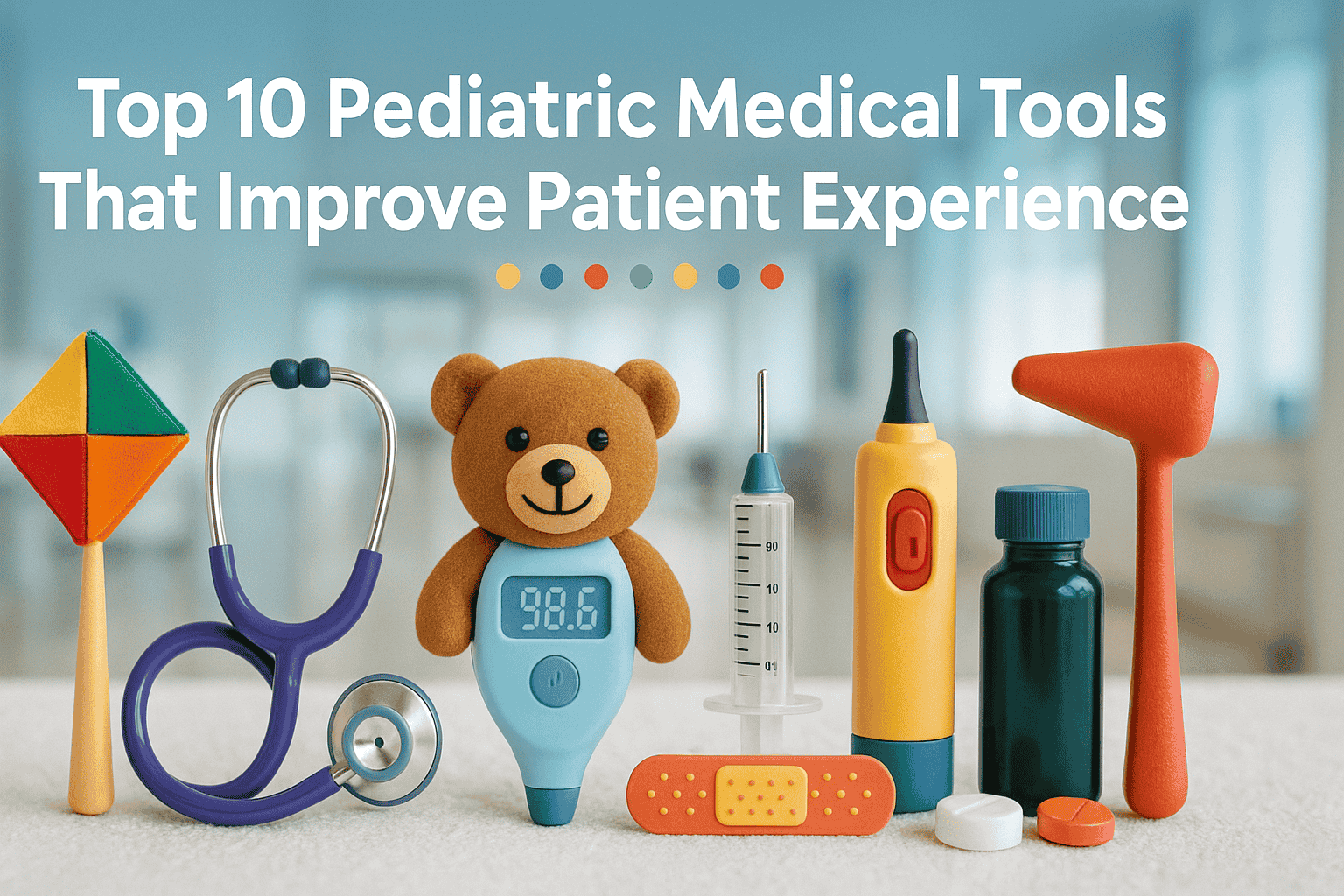Top 10 Pediatric Medical Tools That Improve Patient Experience

In pediatric healthcare, every tool matters. From the waiting room to the exam table, the right pediatric medical supplies can make a world of difference in a child’s experience. Children are more likely to feel anxious, fearful, or uncooperative in a medical setting, but using equipment tailored to their size, comfort, and developmental stage can reduce stress and build trust. According to a study published in Pediatrics, up to 60% of children experience fear or anxiety in medical environments, highlighting the need for thoughtful, child-centered care. This article explores the top 10 pediatric medical tools that not only meet clinical needs but also enhance the overall patient experience.
How the Right Pediatric Medical Supplies Reduce Anxiety and Improve Cooperation
Pediatric patients are not just small adults; they require a different approach. Their emotional and psychological needs are as important as their physical care. When medical professionals use child-sized, friendly-looking equipment, it helps normalize the environment. Fun colors, friendly characters, and age-appropriate designs can significantly lower a child’s defenses. This creates a more positive interaction, improving cooperation and allowing for more accurate assessments and smoother procedures. Pediatric medical supplies are essential for making children feel safe and seen.
Top 10 Pediatric Medical Tools That Improve Patient Experience in Hospitals
1.) Child-Friendly Thermometers
Digital thermometers designed with animal shapes or fun colors help distract young patients while ensuring accurate readings. Forehead or ear thermometers are especially useful, as they require less contact and can often be used while the child is resting or playing.
Benefits:
-
Non-invasive and fast
-
Engaging designs reduce fear
-
Suitable for various age groups
2.) Pediatric Stethoscopes
These stethoscopes are designed with smaller chest pieces and softer materials. Many come in bright colors or with character attachments that make them less intimidating.
Benefits:
-
Better acoustic performance for smaller bodies
-
Reduces fear through playful design
-
Helps build rapport between provider and child
3.) Child Blood Pressure Cuffs
A critical tool in pediatric care, child blood pressure cuffs are smaller and often decorated with fun prints. They are essential for obtaining accurate readings without causing discomfort.
Benefits:
-
Ensures accurate blood pressure readings
-
Comfortable fit for various pediatric age groups
-
Bright, friendly designs promote relaxation
4.) Distraction Devices and Sensory Toys
Tools like spinning light toys, stress balls, and handheld games are invaluable in pediatric settings. They help divert attention during procedures and reduce perceived pain.
Benefits:
-
Reduces anxiety and discomfort
-
Encourages cooperation
-
Ideal for use during vaccinations or blood draws
5.) Pediatric Hospital Beds
Pediatric hospital beds are scaled down to fit children's bodies and often feature cheerful designs or built-in entertainment systems.
Benefits:
-
Increases comfort and safety
-
Promotes restful sleep and faster recovery
-
Makes hospital stays feel less clinical
6.) Pediatric Pulse Oximeters
These are designed to fit smaller fingers and often include playful elements to keep children engaged while being monitored.
Benefits:
-
Provides accurate oxygen saturation levels
-
Comfortable and non-invasive
-
Reduces fear through child-friendly visuals
7.) Pediatric Badge Reels
Healthcare professionals can wear pediatric badge reels featuring fun characters like pandas, giraffes, or dogs. These small but powerful tools help build rapport with young patients.
Benefits:
-
Makes staff appear more approachable
-
Initiates conversation and distraction
-
Reinforces a child-friendly atmosphere
8.) Reflex Hammers
Pediatric reflex hammers come in fun shapes like animals and are softer than standard versions. They make neurological exams less intimidating.
Benefits:
-
Encourages participation during exams
-
Reduces fear of unfamiliar tools
-
Adds a playful element to procedures
9.) Otoscope Tips
Child-sized otoscope tips ensure gentle ear exams and are often paired with colorful or themed otoscopes.
Benefits:
-
Provides clear view with minimal discomfort
-
Increases cooperation during ear checks
-
Designed to fit small ear canals safely
10.) Nasal Syringe
Used for clearing nasal passages, pediatric nasal syringes are softer and often come in fun designs to ease the experience.
Benefits:
-
Helps relieve congestion comfortably
-
Easy for caregivers to use
-
Reduces stress during at-home care
Conclusion
Choosing the right pediatric medical supplies is more than a matter of size, it’s about shaping the patient experience. Child blood pressure cuffs, pediatric hospital beds, and even small touches like pediatric badge reels contribute to a more welcoming, less stressful environment for young patients. These tools not only improve cooperation and outcomes but also help build long-term trust in healthcare settings. For hospitals and clinics aiming to elevate their pediatric care, investing in child-friendly equipment is a step that pays off in both smiles and results.
